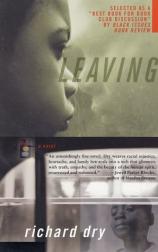Reading Group Guide
Discussion Questions
Leaving

1. How does the structure of Leaving contribute to the themes explored in the novel?
2. What do the characters attempt to leave in this novel other than physical places? Can the act of leaving be applied to historical and psychological contexts?
3. To what degree are the characters successful or unsuccessful at leaving?
4. What role do the slave narratives and historical documents play in the book? Look at each Santa Rita chapter and discuss the relationship it has to the development of the characters, plot, and themes?
5. What does the intersection of the personal and the historical say about the confluence of individual and societal responsibility?
6. Is the race of the author significant? Why or why not? Does the same apply to gender?
7. What issues about relationships and self-knowledge apply to the human condition regardless of race?
8. Consider a particular passage in which Dry uses description to create emotional impact. How is emotion conveyed through physical detail?
9. How does Lida's relationship with Ruby parallel Love Easton Childer's relationship with Elise?
10. How does Love LeRoy's relationship to his brother, Li'l Pit, reflect his notions of responsibility and manhood?
11. What is the connection between Love Easton's sense of self and his relationships with female characters?
12. What differences exist between Love and Li'l Pit and how do they contribute to their development?
13. What differences and similarities exist between Joyce and Love?
14. Who is the person reading and speaking in the Santa Rita chapters? What significance does it have?
15. How do the characters undermine traditional notions of good and evil?
16. In what ways do the epigrams reflect themes in the novel?
Leaving
- Publication Date: April 9, 2003
- Paperback: 464 pages
- Publisher: St. Martin's Griffin
- ISBN-10: 0312302878
- ISBN-13: 9780312302870






